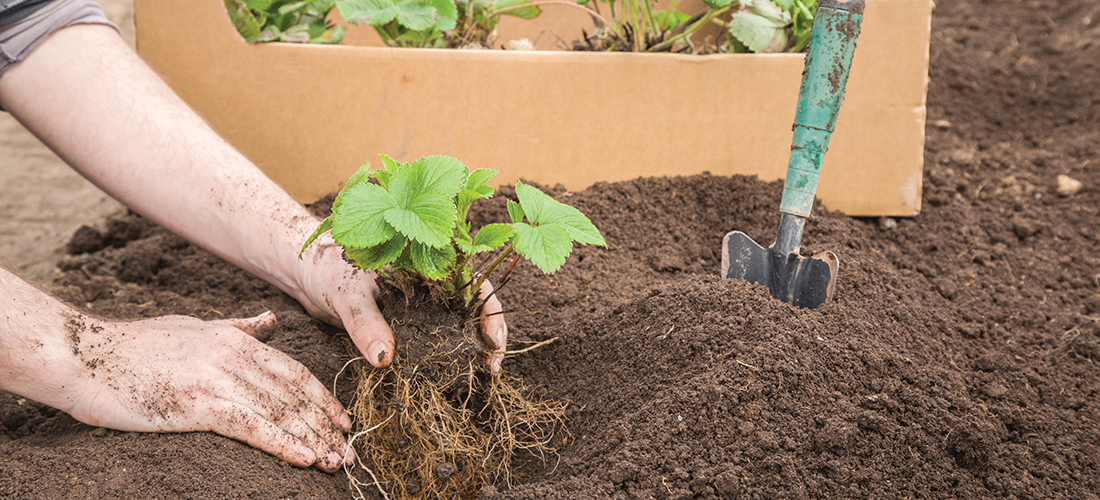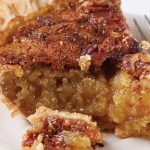
Strawberry Fields October
Getting a jump on your shortcake
By Jan Leitschuh
Strawberries? Now? The first fruit to ripen . . . in spring?
Yes, even though our seasonal taste buds are turning toward crisp fall apples, your local farmers are busy planting strawberries right now through mid-October. Come next April, they will be enjoying the fabulous, juicy, shortcake-making sweetness of the tender Sandhills strawberry — hardly a cousin to those sturdy but bland California strawberries, bred for shipping great distances rather than for taste.
Of course, come spring you can buy their berries at local farm stands, markets and co-op boxes, and I hope you do — who ever gets enough strawberries in spring?
But you, passionate kitchen gardener, lover of the soil and connoisseur of the freshest homegrown tastes, can do the same as your local farmers. The strawberry is one of the easiest fruits to grow. And like your fellow producers, now is the best time to put a patch in your garden.
In September, your local strawberry growers prepped their soil, throwing up raised rows that were then covered with plastic. The strawberry plugs they buy get planted in holes punched through the plastic at regular intervals. This keeps the weeds down and makes for a very clean bed for You-Pick operations.
“We’ll go until about mid-October with the planting,” says Steve McNeill, a Lemon Springs farmer who not only plants several acres of strawberries for fresh production but runs a strawberry nursery. He is one of four N.C. farmers growing “tips,” or runners rooted in plug trays for sale to other large-scale producers. After planting, the plastic-covered rows are then watered and fertilized — “fertigated” in the lexicon — through special drip tape under the plastic.
But the home gardener, with no need to bet the farm on a crop, can pull this off much more simply. Commercial growers tear out their strawberry beds each year and plant anew each fall to prevent disease. “One disease can mess you up for the season,” says McNeil, ruefully. “For the farmer, it’s a high-risk crop.”
Home gardeners need not tear out their beds until year three or four, nor do they need plastic and drip tape. You can consider your original berry plant purchase an investment in the future. You can let them run.
The kitchen gardener, pursuing ease of culture and ambrosial taste, may do better going with a “matted row” system. That is where the original plants go right into the garden bed (no plastic) and are allowed to “set” the “runners” the mother plants make after their first spring. These runners will form new strawberry crowns for the following year. Along with the original plants, these new free plants continue to increase your harvests. Indeed, 25 original plants, allowed to run and fill out, can produce up to 25 quarts of ripe, juicy berries for the happy gardener, and do it for a couple of years. At supermarket prices, that’s a good payback on your investment.
You can buy your plants online, shipped as bare-root plants, or perhaps luck into a farmer with some extra plugs. Friends often trade extra plants, but that can spread disease if the patch is infected. Home gardeners also want June bearers — save the ever-bearing varieties for Northern gardens.
While local farmers are planting varieties like Chandler, Camarosa and Sweet Charlie, specially adapted for plasticulture, home gardeners aiming for a matted row might try Atlas, Earliglow, Titan, Tribute, Apollo and Earlibelle. The early-bearing Sweet Charlie would also work in a matted row.
Have a sunny, weed-free area of the garden, accessible to the hose? A raised bed? That’s your potential patch. Strawberries love a sandy loam with a good amount of organic matter. A strawberry plant loves good drainage, and that is what the Sandhills possess in spades. New plants are happiest when evenly moist — not too soggy, but not extended dry periods that let these shallow-rooted plants wither.
Till in some well-rotted manure, near-composted straw, old sawdust or decaying, chopped leaves to improve the organic part of your sand. Mix in a little slow-release organic fertilizer or 10-10-10 to help your young plants get a jump start, and of course, adjust pH according to your soil test — you did test, didn’t you? (Soil test kits are available from the N.C. Cooperative Extension in Carthage.) Chances are, you need a little lime, so toss some in when tilling. A 5.8 to 6.2 pH is ideal for peak production.
One farmer I know waters his plants with a little well-diluted epsom salts from time to time. Apparently, the magnesium therein makes for the sweetest-tasting berries. You could also include Sul-Po-Mag in your prep and tillage for not only magnesium but also essential potassium and sulfur.
When your plugs or bare root plants come, give them a good soaking so they are well-equipped for the rigors of transplanting. If they are moldy, take pictures and call the company at once for replacements.
Cut a stick about 18 inches to use as a marker for spacing. Plant the crowns at the soil line, no deeper. The crown is the place where the top and the roots come together, and you don’t want to bury it. Water in well, and then keep the soil evenly moist but not soggy.
You’ll see your new plants leaf out nicely and grow. Then, wham, a cold snap will seem to kill them off. Never fear, your plants may look dead, but they are just near-dormant, slowing down on top while continuing to strengthen underground. Keep them well-watered during dry spells.
I like to drift some chopped leaves lightly over my beds after the first frosts have knocked back growth. Crape myrtle and maple leaves are my favorites. I don’t know if it helps in the winter, but it does offer a little weed-suppressing mulch and adds to the soil’s organic matter. Don’t smother them, just a light drift.
Come spring, flowers can pop as early as February here if the weather is unseasonably warm. Last winter, farmers were picking a few strawberries in a warm December /January. It is probably best to pick off the earliest blossoms. This saves the young plant’s energy, and the earliest berries, if they survive the cold, are not the best.
In mid-April to early May, depending on what variety you chose, your efforts should, literally, bear fruit. Don’t fertilize while they are fruiting. Too much nitrogen will make soft, mushy berries and too much leaf growth at the expense of a crop.
You may want to keep picking off blossoms to further boost the future crop, letting the energy go toward strengthening the original plant and letting it put out runners, a drain on a plant’s resources. After all, this first year you’re establishing a multi-year planting, unlike our farmers. But if you’re like me, you’ll eventually let some first-year berries come to fruition, because, well . . . strawberries.
Birds may peck a few, but at our house deer are the worst. Same goes for producer McNeill: “Deer are a problem. They will eat the plant in the winter.” He uses an electric fence to deter Bambi’s strawberry depredations.
About June, your original plants will start sending out runners to make daughter plants. Feel free to engineer these, directing the daughter to likely bare spots in your bed. Continue the even moisture throughout the summer, and you will be rewarded with an even better second harvest the following spring. Stress times will be the hot, dry July/August time periods, so a little attention to watering them can increase your flower buds, and thus fruit, for next spring.
Your matted row can grow into a third year, but you may want to renovate it, removing plants to about a 6-inch spacing. Some folks till all but a 12-18 inch strip in the middle, letting the bed fill out again. Others mow the bed, setting the blades high at 4 inches. Fertilize at this point, brush the fertilizer off the leaves with a broom, and then water deeply.
Keep your bed going as long as you can, three years, four years. Weed control will probably be the deciding factor. When you notice your patch losing vigor, it’s time to tear it up and start a new one in another area of the garden.
Besides being delicious, strawberries are among the healthiest of fruits. Ten berries offer 130 percent of your daily vitamin C requirement. A whole cup of berries contains only 55 calories. In addition to their abundant vitamin C, strawberries also offer thiamine, riboflavin, niacin, pantothenic acid, vitamin B6, folate, vitamin B12, vitamin A and vitamin E.
So, enjoy your cinnamon-spiced apple pies, your ginger-apple-butternut soups. Just spare a thought for the spring right now to cultivate your very own strawberry field — if not forever, at least for a few years. PS
Jan Leitschuh is a local gardener, avid eater of fresh produce and co-founder of the Sandhills Farm to Table Cooperative.





